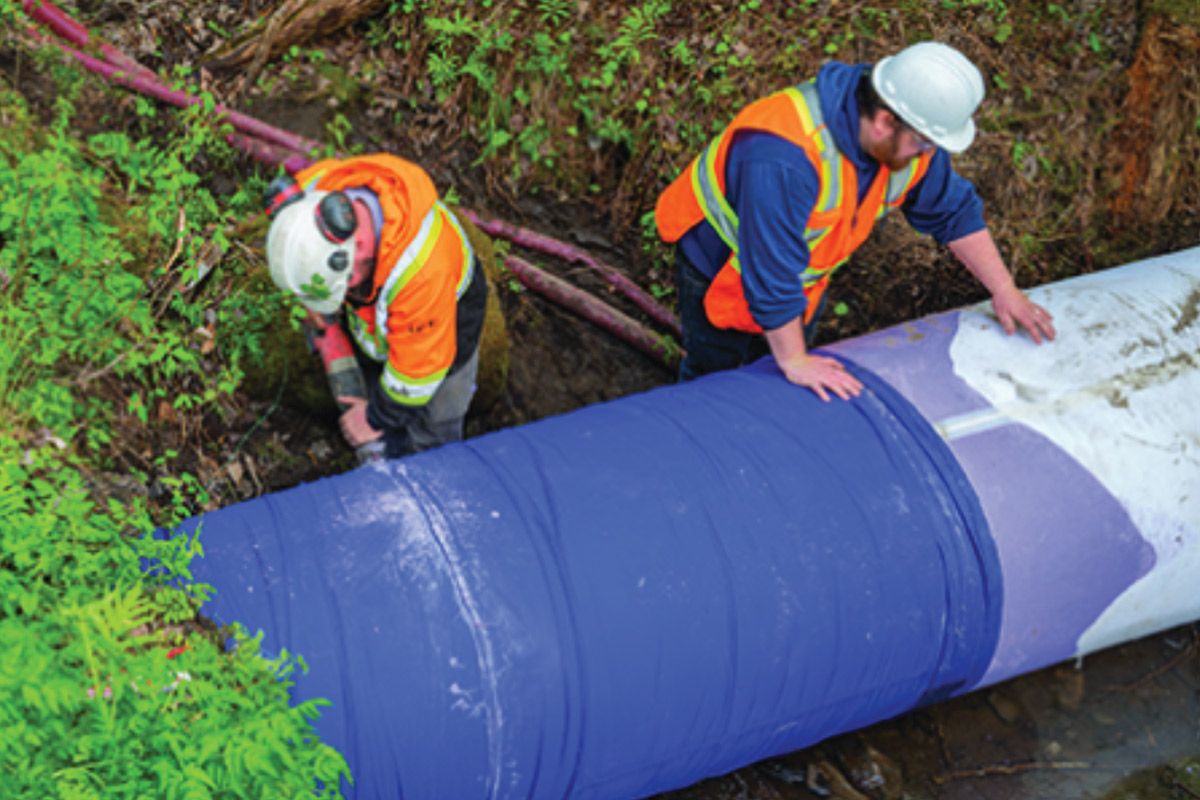
Last Word: Time to Start Recycling for Research

The “triage” concept was once again being touted for inspection technology and we always talk about the existing conditions that we are trying to identify. I then realized that most of the time we simulate a condition in the lab that we wish to identify. We don’t do our research and development on sick people or in our case, sick pipe.
RELATED: Last Word: DCA Showcases HDD on National Mall
The European Pipeline Center run by MTA Messtechnik in Austria has installed an aboveground test bed with various pipe sizes of numerous pipe materials. Open on both ends, pipe cleaning and inspection methods and equipment can be tested and demonstrated. They also have an indoor watermain test system with every kind of fitting and configuration setup imaginable. There is a buried watermain network for leak detection in Walkerton, Ontario, which enables engineers to test new solutions and the technology provider to showcase their capabilities for their customers. The facility includes more than 600 m of various types of watermain pipe sizes and materials and doubles as a training and certification facility. It is also used to gain experience with pipeline condition assessment technologies under controlled conditions. While these facilities serve a purpose well, I don’t know of any setup that uses existing pipe that has been in service and still looks like it did when it came out of the ground.
Numerous times I have seen pipe culverts being torn out on the side of the highway and I can’t help but to imagine applying a rehab solution to some of this for further research and development of standards. I see watermain segments that are cut out to enable rehabilitation, and the pipe segments placed in the dumpster or in a pile to be disposed of later. We need to find a way to get these treasures in the hands of research.
During municipal reconstruction projects the “remove and replace” requirements are likely to have older manholes around. Many of these would exhibit years of buildup of H2S corrosion. Aboveground application of rehab materials could facilitate easy testing for adherence for example. Occasionally, we may be able to remove some earlier precast manhole segments and rebuild when relocated to recreate manhole joints. Perhaps re-create or simulate leaking riser sections by applying water pressure from a flusher truck for testing of leak stoppage materials and systems.
We need infrastructure bone yards. I recall three municipalities that I have seen such an area in the works yards. The City of Montreal, at its lab, had kept pieces of failed PCCP so it could study the cause and effect of pipe deterioration. It was there that I first saw the perforated steel cylinder condition, where there were hundreds of pinhole leaks in a concentrated area. I believe that they had determined that in this case, years of road salt had percolated and sat in the pipe bedding trough long enough to soften the external mortar coating, which, in turn, affected the prestressed wire right to the steel cylinder. To this day, I’d love to do leak detection on this scenario and see what the results would be.
RELATED: Last Word: Break the Skills Shortage Cycle
Washington Suburban Sanitary Commission (WSSC) had pipes of numerous sizes that we would use to calibrate RFEC/TC inspection equipment. This pipe had been removed during re-construction and rehabilitation projects, including during repair of some pipe failures. Metropolitan Water District in Los Angeles had a couple of hundred feet of assembled pipe that we would run our inspection technology through for demonstrations and calibrations. I remember seeing a purposely rolled gasket at one joint and that they would simulate joint leaks.
How do we facilitate this call to action? Perhaps we need a column in trenchless magazines where a research university, equipment, or material supplier could place a call for in-kind contributions, specifying the material need for their work and the general location of the existing infrastructure, along with a timeline. Municipalities could include the disposal means and location of existing infrastructure in construction contract documents that could stipulate conditions to remove, recycle, and replace. I would like municipalities to establish a corner of their works yard as bone yards where researchers could have access to real-life pipe and manhole materials removing the requirements for confined space entry by providing easier above ground access to samples.
With more collaboration between municipalities and research, we can further the development of infrastructure rehabilitation through the “in-kind” donation of system asset parts to further research and development partnerships to sustain healthy infrastructure systems.




